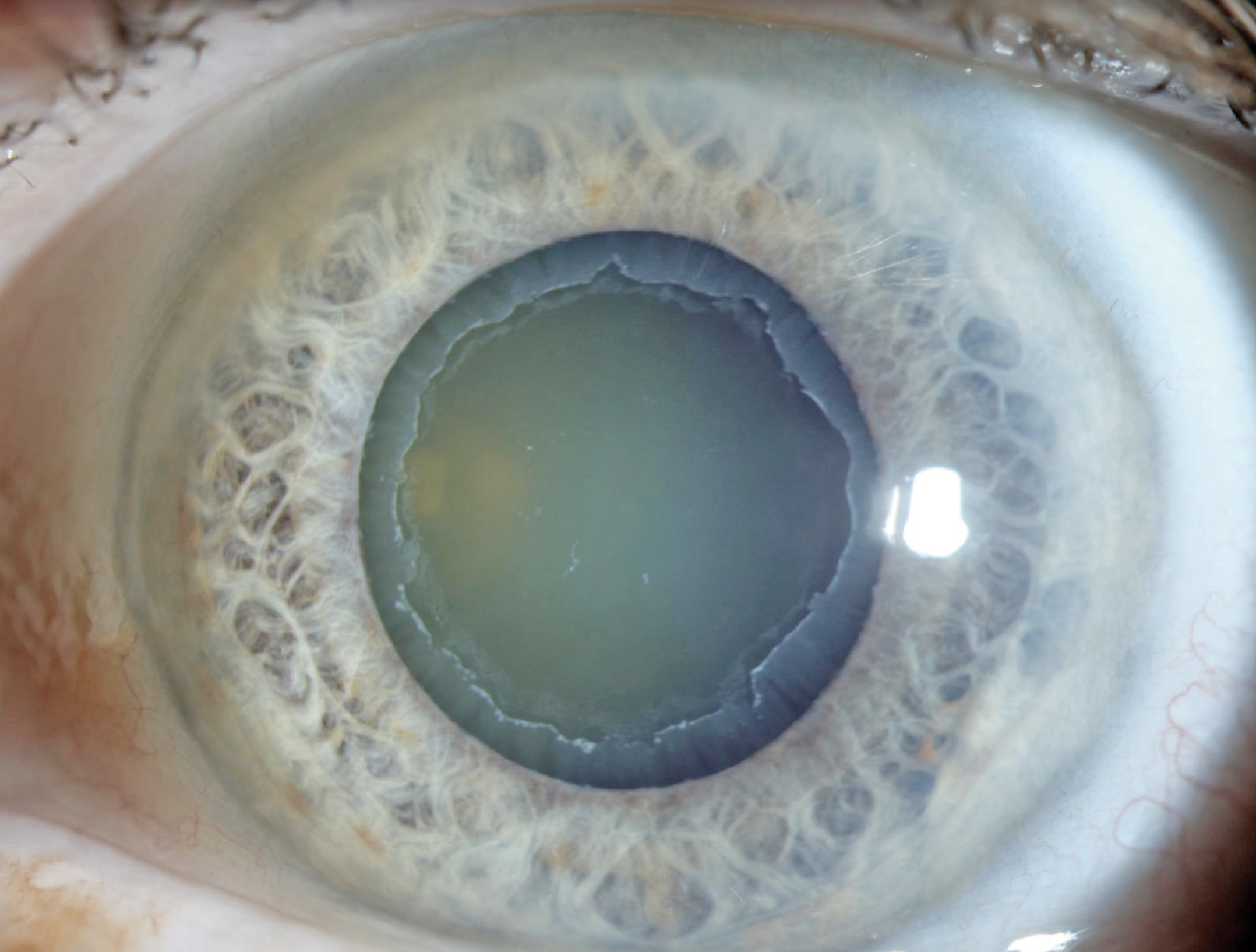 |
| Patients with exfoliation may have a reduced smell sensitivity. Photo: Aaron Bronner, OD. |
Providing new insight into glaucoma’s association with neurodegenerative diseases, researchers recently found that patients with exfoliative glaucoma (XFG) and exfoliation syndrome (XFS) have reduced smell sensitivity and identification compared with those who have primary open-angle glaucoma (POAG) and those without glaucoma.
This prospective, cross-sectional study included 20 patients with POAG, 20 with XFG and 20 with XFS. The control group consisted of 20 age- and sex-matched healthy subjects with no evidence of ocular disease. One eye per patient was included for statistical purposes. A smell test was used to determine the threshold values and to assess the ability of smell identification and differentiation in all patients.
The XFG, POAG and control groups showed a significant difference in odor discrimination, odor identification and threshold discrimination scores. The smell sensitivity and differentiation were significantly different among the groups. The XFG group had a significantly lower smell identification level than the POAG, XFS and control groups. Results can be seen in Table 1.
“Patients with POAG and XFG were found to have decreased smell sensitivity compared with patients with XFS and healthy controls, and this may be important in terms of the effect of the neurodegenerative process on the pathogenesis of glaucoma,” the study authors concluded in their paper.
Table 1. Smell Identification and Differentiation Results (higher numbers are better) | |||
| Smell Threshold Level | Smell Differentiation Value | Smell Sensitivity Value | |
| POAG | 4.5 | 12 | 26 |
| XFG | 4 | 8 | 19 |
| XFS | 5 | 11 | 28.3 |
| Control | 5.5 | 12 | 29 |
Dikmetas O, Aygün O, Kocabeyoglu S, et al. Smell sensitivity in primary open angle glaucoma and pseudoexfoliation glaucoma. J Glaucoma. February 18, 2022. [Epub ahead of print]. |


